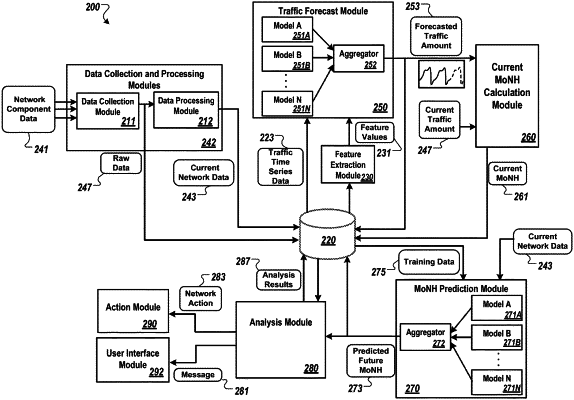| CPC H04L 47/127 (2013.01) [H04L 43/045 (2013.01); H04L 43/06 (2013.01)] | 20 Claims |

|
1. A method performed by one or more computers, the method comprising:
determining, by the one or more computers, a predicted traffic amount for a communication network for each time period in a series of multiple time periods, the predicted traffic amount being determined based on a time series of historical measured traffic for the communication network for multiple time periods;
measuring, by the one or more computers, a traffic amount for the communication network for each time period in the series of multiple time periods;
generating, by the one or more computers, network health scores for the multiple time periods, wherein each of the network health scores corresponds to a different time period in the series of multiple time periods, and wherein each of the network health scores indicates a level of health of the communication network during the corresponding time period, and wherein each network health score is generated using (i) the predicted traffic amount for the corresponding time period and (ii) the measured traffic amount for the corresponding time period;
generating, by the one or more computers, a feature vector of status information for the communication network for each time period in the series of multiple time periods, wherein each of the feature vectors is indicative of a status of network elements of the communication network during the corresponding time period; and
training, by the one or more computers, a machine learning model based on the feature vectors and the network health scores for the multiple time periods, wherein the training adjusts parameters of machine learning model to obtain a trained machine learning model that is enabled to (i) receive, as input to the trained machine learning model, a feature vector of status information for a first time period and (ii) output a predicted network health score that the trained machine learning model generates in response to receiving the received feature vector, wherein the predicted network health score indicates a level of health of the communication network that is predicted to occur at a time period after the first time period corresponding to the received feature vector.
|